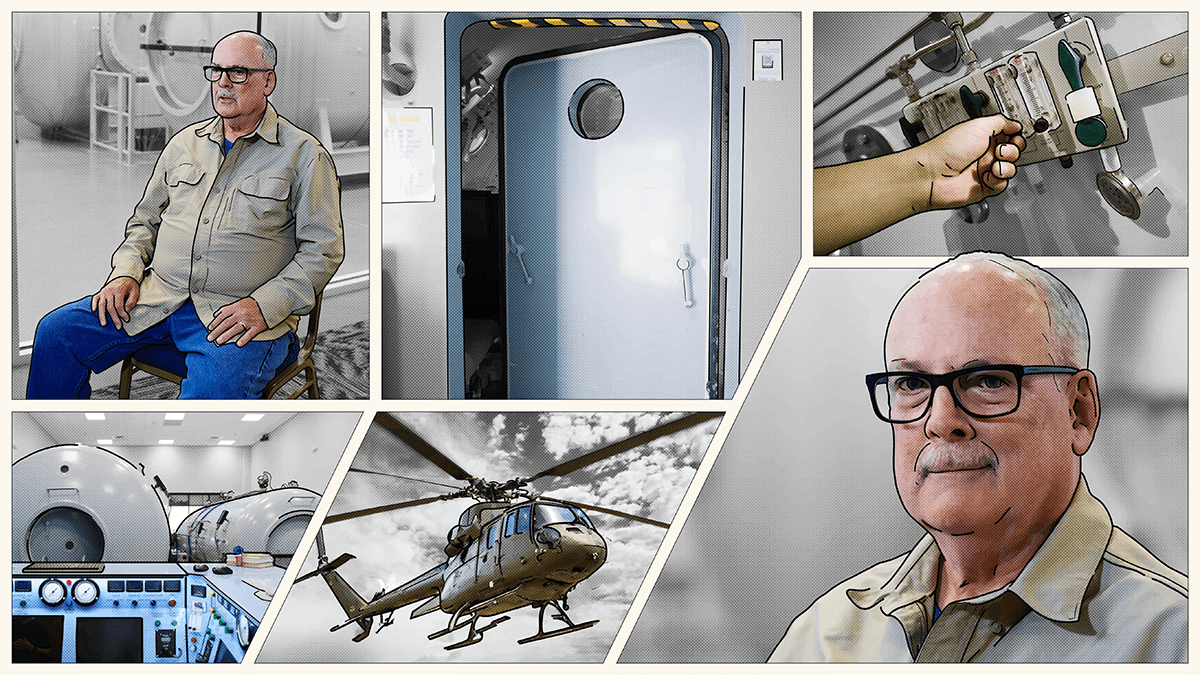A Veteran’s Triumph Over Chronic Pain Through Hyperbaric Oxygen Therapy
T.J. Dunphy
Major LDO USMC, Retired.

T.J. Dunphy, a retired U.S. Marine Major LDO, served over 28 years, with his significant injury occurring during his second tour in Okinawa, post-Vietnam War in 1976. Following a vehicular accident that left him with unresolved brain injuries, T.J. navigated decades of pain and undiagnosed conditions, affecting his professional and personal life. Despite the challenges, including the initial lack of diagnosis and subsequent struggles with Veterans Affairs, T.J. pursued treatment options that eventually led him to hyperbaric oxygen therapy (HBOT).
Chronic Headaches and Brain Pressure:
Dunphy described experiencing severe, debilitating headaches, likened to a “9-inch nail” or “lightning bolt” striking his head. These episodes were unpredictable and could occur at any moment, significantly impacting his daily life. After starting HBOT, Dunphy reported a notable alleviation of the constant pressure in his brain, a fundamental symptom that had persisted for years. Following just six dives, this omnipresent pressure was significantly reduced, marking a critical turning point in his treatment. The therapy’s ability to increase oxygen saturation in the blood likely helped reduce inflammation and promote healing within the brain, addressing both the root cause and symptoms of his chronic headaches.
Osteoarthritis:
In addition to his brain injury, Dunphy suffered from osteoarthritis, particularly in his feet and knees, which caused significant pain and mobility issues. Remarkably, after undergoing HBOT, he observed a considerable alleviation of arthritis symptoms, with the exception of persistent issues in his right knee. The therapy’s anti-inflammatory effects and its role in promoting blood flow likely contributed to the reduction of arthritic pain and improved joint function. This unexpected benefit of HBOT highlights its potential in treating inflammatory conditions and enhancing overall joint health.
Dry Eye Syndrome:
Dunphy also contended with dry eye syndrome, exacerbated by his high blood pressure, for which he required medication. Interestingly, after initiating HBOT, he noticed an improvement in his condition, to the point where he no longer needed to use over-the-counter treatments during the day. This improvement suggests that HBOT may have contributed to better tear production or quality, possibly by enhancing glandular function or reducing inflammation around the eye area. The reduction in dry eye symptoms underscores the wide-ranging systemic benefits of increased oxygenation through HBOT.
Emotional Well-being and Coping:
Dunphy’s ability to cope with the emotional and psychological impact of his injury was significantly challenged. Through art therapy and the subsequent engagement with HBOT, he found a means to express and confront the emotional turmoil associated with his condition. HBOT’s role in improving his physical symptoms likely had a positive ripple effect on his mental health, providing a sense of progress and relief that had been elusive for years.
T.J. Dunphy’s experience with Hyperbaric Oxygen Therapy highlights the therapy’s multifaceted benefits, demonstrating its effectiveness in addressing both the direct and indirect consequences of traumatic brain injuries and other related conditions. His journey underscores the importance of exploring innovative treatments that can offer relief and recovery to those who have endured long-term health challenges.
